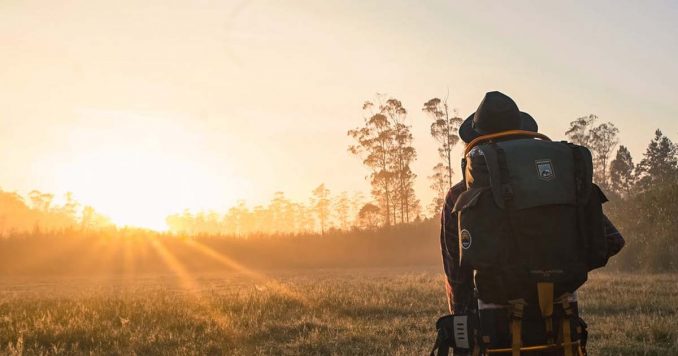
Most of us are so used to modern conveniences that surviving in the wild is something that happens only on special weekends or vacations. In an emergency, survival is possible, but if you’re not an outdoorsman, it’s easy to fall for many of the common mistakes that first-timers make in a survival situation. To prevent those situations, we’ve pulled together a list of some of the most common survival mistakes and how to avoid them so that you can be ready the next time you head out into the woods.
1. Neglecting the 5 Keys to Wilderness Survival
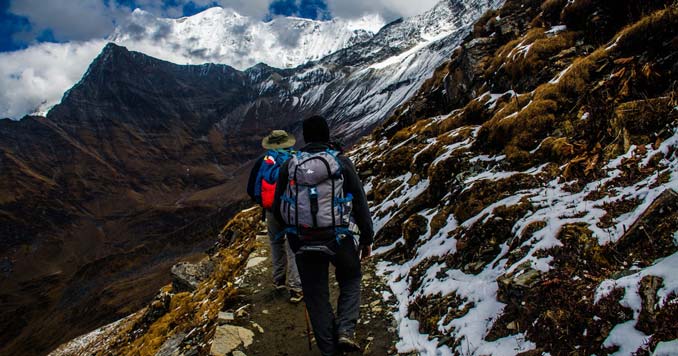
If you’re not an avid camper and you find yourself thrust into a survival situation, your odds of making it out alive are lower than those of someone who spends all of their free time in the woods. That’s why it’s important to know the Five Keys to Wilderness Survival. These basic tenants can save your life, and all you need to remember is five words:
- Shelter: Even in warm weather, a basic shelter can help protect you from the elements.
- Signal: If you find yourself stranded in the wilderness, the ability to signal for help could save your life by letting search and rescue teams know where you are.
- Food: A primary tenant for life, regardless of the situation. While you can survive for weeks without food, you’ll get very weak, which will make survival less probable.
- Fire: A good fire is necessary to cook food, boil water, stay warm and keep predators away. It can also be used to signal rescuers.
- Water: Water is essential. You cannot survive in the wilderness for more than a few days without water.
Some sources cite a sixth key — naturalist knowledge. Knowing what plants are safe to eat and how to avoid predator game trails can also be useful.
2. Getting Wet

Sometimes getting wet is unavoidable. You’re out in the wilderness, after all, and getting caught in a rainstorm or trudging through a shallow creek is sure to dampen your day. In survival situations, you want to try to stay dry as much as possible — especially if the weather is cold. Wet clothing will leech warmth from your body, making hypothermia a serious possibility.
Ideally, if you’re camping, you’ll have everything you need to keep yourself warm and dry if the sky decides to rain on you, but in a survival situation, you’ll want to take shelter as quickly as possible. If it’s cold out, strip off your wet clothes and build a fire to dry them. Don’t try to wait for them to dry on your body — you’ll stay warmer sitting next to a fire in your underpants than you will by trying to dry wet clothes while you’re still wearing them.
3. Drinking Unpurified Water

Just because a stream looks clean and clear doesn’t mean it’s safe to drink. Water can hide a plethora of microscopic bacteria that can make you very sick, and the vomiting and diarrhea that they cause can exacerbate dehydration. Ideally, you’ll want to boil any open water before you drink it, but that means you need a fire and a container to hold the water.
If you don’t have a survival straw or water purification tablets handy, you do still have a few options. Fresh snow or rainwater that doesn’t filter down from the treetops is usually safe to drink without purification. If you’ve got a plastic water bottle, exposing it to sunlight for at least a day can render it safe to drink by using the sun’s UV rays to kill any bacteria. This process only works for small bottles though, so don’t try to purify anything larger than a 2-liter bottle.
Planning ahead is the key to staying out of trouble. We advise everyone to carry a good hiking filter in their bags. Check out our review on the top portable hiking filters.
4. Lacking Fire-Building Ability
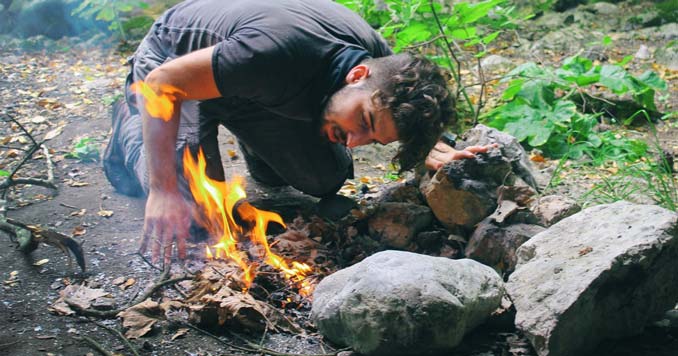
After water, fire is probably the most important element to help you survive in the wilderness — especially after an accident or crash. If you can’t build one, you’ve got no way to cook food, boil water or signal rescuers.
Building a fire is simple. Start with kindling — small pieces of bark or leaves that catch easily and quickly. Once those have caught, start adding small branches, slowly working your way up to larger branches or fallen logs to make the fire last longer.
Igniting the kindling can be challenging. Matches, lighters, or firestarters that generate sparks are ideal, but if you don’t have those on hand, you’ve still got some options. If you’re wearing glasses or have a cell phone in your pocket, you can use the lenses or screen to focus sunlight. If you have a condom in your wallet or pocket, fill it with water to create a lens.
If you’ve got a pocket knife and can find a piece of flint, you can use the two items to create sparks. With two sticks and a bit of string, you can create a bow drill to start a fire using friction. Whatever method you choose, get your fire started and keep it lit. If you want to signal any potential search and rescue teams, throw some green wood — fresh off the tree, if possible — into the flames. It will generate a lot of smoke, making your campsite easy to locate.
Practice in your backyard a bit to see how well you can build a fire with some of these tools. You don’t want your first attempt at wilderness firebuilding to happen when you’re stranded in a survival situation.
5. Moving Without Navigation Tools
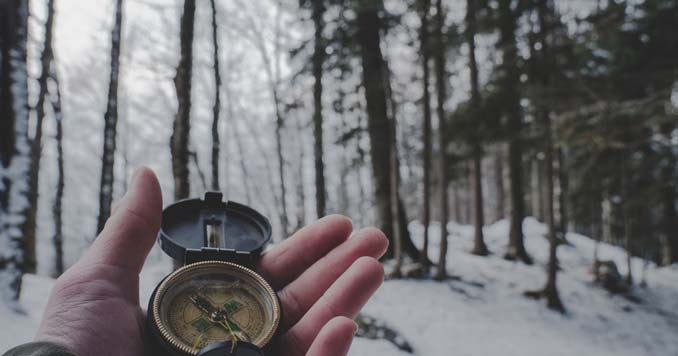
It’s easy to get lost in the woods. That’s why most hikers carry a map, compass and GPS with them to ensure that they make it home safely. If you don’t have any of these things, moving your campsite could carry you deeper into the woods instead of toward civilization. If you’ve found a safe spot with food, water and shelter, stay there — moss doesn’t always grow on the north side of trees, and water doesn’t always lead to civilization anymore.
If search and rescue teams are looking for you, staying put is also the easiest way to help them find you. If you’re moving around, it makes it harder for them to find you, and they can only look for so long before they declare you lost to the wilderness.
6. Eating the Wrong Thing

Can you tell the difference between a granny smith apple and a manchineel? What about the difference between blueberries and belladonna? The two latter fruits are deadly. Manchineels are also known as manzanilla de la Muerte — the little apple of death — and belladonna contains atropine, which can be fatal in large doses. Finding food in the wilderness isn’t impossible, but you have to be careful that you’re not making your situation worse.
Don’t eat anything you’re not 100 percent sure about. If you’re 99 percent sure, leave it and find something else to eat. Meat is usually safe as long as you have a fire to cook it, so if you can catch birds, snakes, and fish, you’ve got a reliable source of protein.
If you can stomach them, insects are also a good source of protein. Just avoid spiders and multi-legged insects as well as anything with bright colors. In the natural world, bright colors often mean poison, so it’s better to leave them to live their little insect lives.
7. Ignoring the Climate
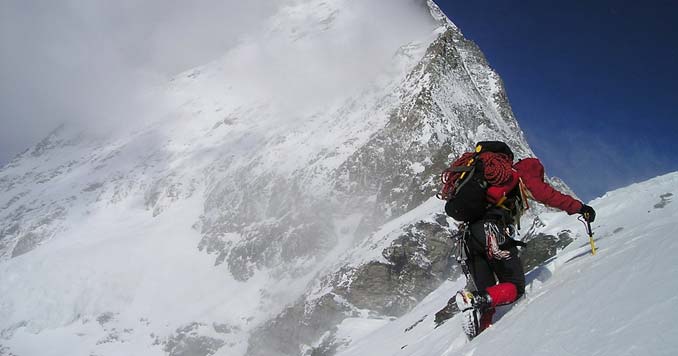
The climate will vary dramatically depending on where you’re stranded. Northern climates are cold and dry, creating the threat of hypothermia, while southern climates tend to be warm and humid, presenting a whole different type of risk.
Paying close attention to the climate can help you decide when you need to take shelter and when it’s safe to be out and about. If you’re in a hot area, water and shade are paramount to keeping you from becoming dehydrated or suffering heat exhaustion or heat stroke. In cold regions, food and shelter are most important — you’ll burn more calories in the cold, and you need to eat more to stay alive.
If you don’t pay attention to the climate, it becomes harder to survive.
Survive the Great Outdoors
No one wants to think about being stranded in the wilderness with only the clothes on their back and the contents of their pockets, but these basic survival skills can mean the difference between life or death in a survival situation. Practice your survival skills at home so that you have them handy if you ever find yourself stranded.
We used being stranded in the woods as an example, but there are numerous situations where these skills could come in handy. During a natural disaster, when power and water are damaged, knowing how to start a fire, forage for food or purify water could save your life.
Even if you never face a survival situation in your entire life, it’s better to have the skills and not need them than the opposite. You wouldn’t leave the house without your keys if you intended to drive, and you shouldn’t go without a basic grasp of survival skills either.




I want to add heading out into the wilderness without informing anyone of their plans and overpacking. While having the necessary equipment and supplies to survive in the wilderness is important, overpacking can be a problem. It makes your pack heavier to carry, but it can also slow you down and make it more difficult to move around. Pack only what you need and ensure that everything you bring has multiple uses.